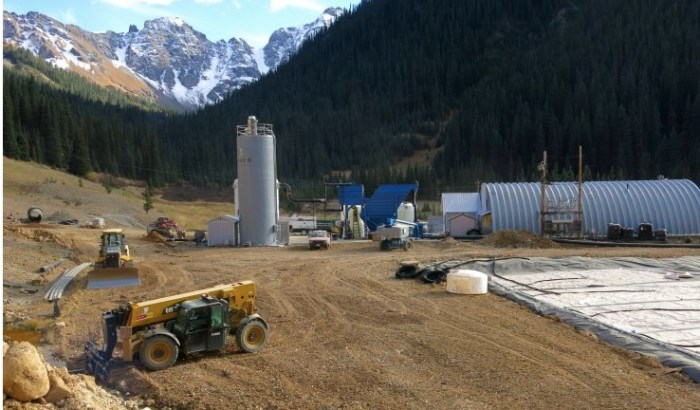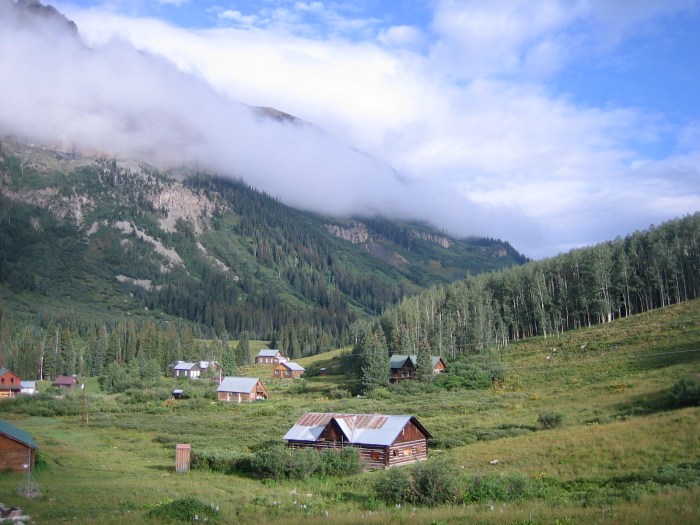
Here’s the release from the Colorado Water Trust, et al. (Mark Harris, Mark Harris, Donald Anderson, and Scott McCaulou):
On Saturday, August 1, Colorado Water Trust, Grand Valley Water Users Association, and Orchard Mesa Irrigation District will initiate their implementation of an agreement that will deliver 877 acre-feet of water to the Grand Valley Power Plant and the 15-Mile Reach of the Colorado River above its confluence with the Gunnison River near Grand Junction, Colorado this summer. Grand Valley Water Users Association and Orchard Mesa Irrigation District identified available capacity in their water delivery system for Colorado Water Trust to deliver water decreed for power generation through the Grand Valley Power Plant, from where it subsequently returns to the 15-Mile Reach. This delivery will mark the second execution of an innovative agreement that Colorado Water Trust, Grand Valley Water Users Association, and Orchard Mesa Irrigation District entered last year with assistance from the Upper Colorado Endangered Fish Recovery Program and the Bureau of Reclamation.
The agreement furthers common goals of streamflow restoration for the 15-Mile Reach and takes steps toward unlocking a $425,000 grant from Walton Family Foundation to renovate the aging Grand Valley Power Plant. Thanks to donor support, Colorado Water Trust has purchased stored water from the Colorado River District. That water will be released from Ruedi Reservoir to the Colorado River for use in the power plant and to increase 15-Mile Reach flows to support four species of endangered fish including the Colorado Pikeminnow, Humpback Chub, Bonytail, and Razorback Sucker.
“We are so grateful to Grand Valley Water Users Association and Orchard Mesa Irrigation District for coordinating with us to boost flows in the 15-Mile Reach. Seeing the project work for a second year in a row proves the lasting success of our partnerships, and it’s particularly important to the fish this year, with flows as low as they are.” says Kate Ryan, Senior Staff Attorney for Colorado Water Trust.
This is the second time in the past two summers that Colorado Water Trust purchased water stored in Ruedi Reservoir for release to the 15-Mile Reach of the Colorado River to help maintain healthy streamflow and water temperatures. Purchases since 2019 will result in delivering over 1200 acre-feet of water to the Colorado River. Colorado Water Trust works closely with Grand Valley Water Users Association and Orchard Mesa Irrigation District to identify when there is available capacity in the power plant. Colorado Water Trust also works closely with the Upper Colorado River Endangered Fish Recovery Program to determine when the 15-Mile Reach needs supplemental water most to support the fish. When these two conditions overlap, Colorado Water Trust releases the water purchased out of storage for delivery to the power plant and then the 15-Mile Reach.
“Orchard Mesa Irrigation District and the Grand Valley Water Users Association appreciate the Colorado Water Trust’s facilitation of this agreement–it benefits our two organizations at the Grand Valley Power Plant, and the many other water users who support flows through the 15-Mile Reach. We believe these kinds of collaborative efforts to be of great value to the people of Colorado, the Colorado River, and the fish,” says Mark Harris, General Manager of Grand valley Water Users Association.
“Maintaining adequate flows for endangered fish through the 15-Mile Reach is possible only because of the extraordinary cooperation our Recovery Program enjoys from multiple partners and stakeholders. We are delighted to add the Colorado Water Trust to that mix of cooperators. This year, in light of unusually low flow conditions in the Colorado River, the additional water made available through this leasing arrangement is especially welcome,” says Donald Anderson, Hydrologist and Instream Flow Coordinator for the Upper Colorado River Endangered Fish Recovery Program.
The Roaring Fork Conservancy also helps to inform Colorado Water Trust of conditions on the Fryingpan and Roaring Fork Rivers to so that releases will complement flows on the stream sections between Ruedi Reservoir and the Colorado River. This year, the water released from Ruedi Reservoir will serve a few purposes before it supports the health of endangered, native fish in the Colorado River in the 15-Mile Reach. The water will bring flows in the Fryingpan River closer to their average, and will cool water temperatures on the Roaring Fork River. Finally, on the Colorado River, the water will generate hydropower, helping to produce clean energy.
“Flowing rivers are an economic engine in Colorado, providing immense value to irrigators, drinking water providers, and recreation across the state,” says Todd Reeve, CEO of Bonneville Environmental Foundation and Director of Business for Water Stewardship. “It is for this reason that we are seeing more and more corporate funders step forward to invest in innovative projects like this one that help keep the rivers in Colorado flowing.”
Essential to the project’s success are dedicated donors: Bonneville Environmental Foundation, Coca Cola, Colorado Water Trust donors, and Daniel K. Thorne Foundation. Without these generous donations and the collaborative work of local and state agencies, water releases to support the health of the 15-Mile Reach of the Colorado River would not be possible.
ABOUT COLORADO WATER TRUST: Colorado Water Trust is a statewide nonprofit organization that works collaboratively with partners all across Colorado on restoring flow to Colorado’s rivers in need using solutions that benefit both the people we work with and our rivers. Since 2001, we’ve restored 12 billion gallons of water to rivers and streams across the state.



















































































